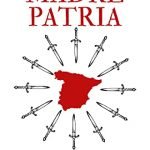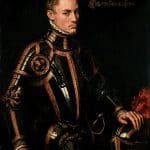
Contents
9 Spanish History, 10 English Stories
The Empire of Carlos I of Spain (Carlos V of Germany) could never suspect that his possessions would cover such great extensions and such enormous distances between them. Although it is true that his empire in Europe was already great for the time, the result of his inheritance.
The Spanish Empire was the first
A truly global empire
The extension of it grew a lot during his reign 1519-1566 since he took possession of the Crown of Spain. He was King not only of Spain in the Peninsula, also almost half of Italy was of Spain, with the Kingdom of Naples, Sardinia, Sicily. He also owned enclaves in North Africa. And also the lands where he had grown up, (Ghent) Flanders and Bramante, today the current countries of Belgium and Holland.
But he soon learned that in the newly discovered New World, the Caribbean Islands, Cuba, Hispaniola and Puerto Rico were of considerable size and controlled the Caribbean Sea. He had news that a whole character, Hernán Cortés, invaded the continent adding new and enormous extensions to his Empire while sending him enormous and valuable treasures such as had never been seen in Europe.
The Spanish Empire (16th century)
Along with the Spanish Explorers and Conquerors, by order of his grandparents, the Catholic Monarchs, numerous religious were sent. These missionaries reported the magnitude of the discovery. It is not surprising that a religious Fray Francisco de Ugalde addressed the King like you who have
“The Empire where the sun never sets”

From the beginning of his reign, in a few years a huge expansion of new lands under Hispanic influence in America took place.:
1521- Hernán Cortés conquers the Mexica Empire- 1530-Nuño de Guzmán conquers New Galicia. 1528- Francisco de Montejo conquers the Yucatan Peninsula (Tabasco) – 1527-Pedro de Alvarado conquered the Kingdom of Guatemala. 1532-Pizarro conquered the Inca Empire (Peru). 1536- Gonzalo Jiménez de Quesada conquers Colombia (New Granada). 1540 -Benalcázar and Orellana explore the Amazon. 1522- Magellan and Elcano arrive in the Philippine Islands and the Mariana Islands in the Pacific Ocean.
With King Felipe II the Empire extends even more. In Europe, the Duchy of Milan becomes the Spanish Crown for 150 years. Likewise, Carlos V passes the County of Burgundy to Felipe.
He proclaims himself King of Portugal. Between 1580 and 1640 the Iberian Peninsula will be united. The Iberian Union becomes a reality.
The Iberian Union (Spain + Portugal)
The Union of the Iberian Peninsula (1580-1640)
By annexing Portugal to the Spanish Crown, the Portuguese Empire also passes, with its colonies in Africa, Angola, Mozambique. But there are also a multitude of trading posts in India and Asia.
Muscat, Hormuz, Bahrain, Diu, Bombay, Goa, (Ceylon), Malacca, the Moluccas, Macao, and Nagasaki. Portugal not only dominated trade between Asia and Europe, but also trade routes between Asian regions, such as India, Ceylon, Oman, the Persian Gulf, Indonesia, China, and Japan.
In America, the incorporation of Portuguese Brazil brings most of America under Spanish control.
The British Empire (19th century)
The English tried for 300 years to end the Spanish Empire, but they always failed. In the end they used the Portuguese Empire to establish themselves in Africa and the East, in exchange for protection for Portugal. A real bargain, Portugal had already created a network of colonies and trade, since the 15th century. They just had to occupy. Bombay, Goa, Macao, Cochin, Oman, Hormuz, Ceylan, Nagasaki, Singapore, etc.
The British took as theirs the expression to define their empire, 3 centuries later, already in the 19th century:
“The sun never sets”

Alexander Campbell during a speech delivered in 1852:
To Great Britain and America God has granted possession of the new world, and because the sun never sets on our religion, our language and our arts …
The British arrived late to the creation of their empire and had to occupy the areas that the Spanish did not consider interesting because of the climate or the characteristics of the terrain. The vastness of the frozen lands of Antarctica or North America. And lands with a lot of desert surface such as the Island of Australia, Egypt, Sudan, etc. Only the surface of Australia is 7,800,000 km2 and of them 30% is desert or arid land. The sum of the 3 countries is 11,000,000 km2.
Spanish Facts, English Stories
The Spanish were the great explorers of the world. For 300 years, his advancers visited many corners of the planet. Although the maps were a state secret, in so long the English managed to seize many of them, Francis Drake was not content with stealing the maps, even kidnapping expert Spanish, Spanish and Portuguese pilots, to direct their ships.
James Cook in the eighteenth century, also relied on Spanish maps to prepare his explorations in the Pacific Ocean. This was a great advantage, knowing the winds, islands where to stock up, dangers etc. The Spanish maps were based on the experiences of hundreds of ships on their voyages and hundreds and thousands of deaths.
DRAKE and his Tales
Francis Drake, in addition to being an effective opportunist, was a forerunner of publicity and self-promotion. Some of his stories hint at things that didn’t really happen that way. Some of the facts about him and her discoveries about him were not true.
Ring of the Earth
The first was the Spanish Elcano
Despite the fact that Francis Drake put “Primus Circumdedisti Me” on his shield, it was the Spanish, Juan Sebastián Elcano, the first navigator to complete the world tour. The passage through this area of Drake’s expedition occurred in 1580, although he left in 1578. After kidnapping a Portuguese capital and using Spanish maps he was able to go around the world. Fact that Elcano had already done in the year 1522.
Drake Passage
Strait of Hoces
In the same year when passing from the Atlantic Ocean to the Pacific bordering the southern cone, he passed through Tierra de Fuegos, through a strait that he called the Drake Passage. Of course all the English maps continued to name the place that way. Actually already 50 years before, it was the Spaniard Francisco de Hoces, who discovered it and navigated it.
COOK and its stories
James Cook was the English explorer, which they needed in his history, but what they say, it is necessary to qualify it a lot, he arrived late to almost all places. Spain had already been there.
The occupation of Manila in the Philippine Islands by the English in 1762 was an important event. For a year they were in the capital but could not occupy more areas of the islands. The Spanish resistance was effective and they failed to meet their objectives. However, they looted everything they could and seized valuable Spanish maps.
Thanks to this, James Cook was able to use the valuable Spanish Maps for his expeditions.
Spaniards in Alaska
Cook’s surprise, Spain came before
The natives of the area showed the English some silver teaspoons. They were the spoons stolen from Juan Pérez. This astonished James Cook, he also arrived late to Alaska, in 1778. A Spanish expedition in 1774, Father Crespí noted in his writings the disappearance of some silver spoons.
+ Read more: Alaska, Spain was there
Spaniards in Hawaii
The bearded white men who came before Cook
More than 200 years before Cook, they were visited by the Spanish. It was Álvaro de Saavedra in 1527 and later Ruiz López de Villalobos in 1543. Their legends already include bearded white men who visited them a few generations ago. Therefore, the Spanish already knew about the existence of the Hawaiian Islands and they were represented on their maps, long ago. The number of the islands and their shape were well represented on Spanish maps. But although the latitude was correct, they had indicated the altitude wrong, to mislead other countries and that they could not be located.
Near them had to pass the famous Manila Galleon, loaded with riches. on his return trip to America. They wanted to prevent a pirate from using them as a base to attack the Galleon. before the English.
+ Read more: Hawaii, visitors
Quadra Island and Vancouver
The island that lost its original name

To remedy the claims to Spain for occupying and taking positions in Alaska. The English Captain Vancouver arranged for the island to be called Quadra Island and Vancouver, in honor of the Spanish representative. Later the English changed the name to Vancouver Island.
Discovery of New Zealand
San Lesmes the Spanish ship, lost in 1526
This ship of the Spanish navy captained by Hoces, which was separated from the fleet of García Jofre de Loaisa, when crossing the Pacific, by a storm. The 60 crew members of her, half Galicians, with Basques and flamingos, it is believed that in the end they managed to reach the Moluccas Islands after years.
Several Spanish canyons have been found in the Amanu Atoll (Tuamotu Archipelago). It is believed that in its attempt to reach the Moluccas, the ship survived but ran aground and in order to refloat it, the crew had to throw ballast between them some of the heavy 560 kg guns. They continued through Anaa and Raiatea where they settled, to continue later to New Zealand. From there, following the eastern coast of Australia, they reached the Moluccas, where they were captured and where possibly the Portuguese, defending their dominions, could finish them off.
They left genetic offspring, for this reason Pedro Fernández de Quirós later, and Jame Cook himself, almost 250 years later they found natives with fair skin, light eyes and even blond or redheads. They also saw double canoes with lateen sail. In New Zealand there have been traditional constructions similar to the Galician Hórreos (granaries) since the 16th century. Oral tradition on the island indicates that their ancestors were shipwrecked.
Discovery of Antarctica
The remains of the Spanish ship San Telmo
Officially the first to get a closer look at Antarctica was Captain William Smith aboard a seal hunt. Passing through Cape Horn in the direction of Valparaíso. a storm diverted him from the route and sighted an area of the current island of Livingston, very close to the lands of Antarctica, which would later be called Punta William.
The English proclaimed themselves discoverers of Antarctica
He returned to the area in October 1819 visiting new islands and taking possession of the territories on behalf of England.
However, he and other whalers recognized that they had seen the remains of a large Spanish ship. And although they did not see survivors, it was possible to see how the Spanish crew members had survived for a time, due to the remains of equipment and facilities on the ground.
A Spanish expedition composed of 2 frigates and a ship of the line, heads to Callao. In September 1819 a strong storm surprises them and drags the San Telmo, a 74-gun ship of the line, with 650 men on board. The ship is separated from the group and is dragged towards Antarctic lands. Months later whalers saw her remains. It is unknown if its crew members explored the lands.


